#tourism industry in philippines
Explore tagged Tumblr posts
Text
"The Impact of US-Philippine Defense Agreement on BPO Industry and Economic Growth"
The recently signed Enhanced Defense Cooperation Agreement (EDCA) between the United States and the Philippines has brought about unexpected economic growth for the Southeast Asian nation. The agreement, which was signed in 2014, focuses on strengthening the military alliance between the two countries, but it has also had a significant impact on the Philippine economy. One of the key…
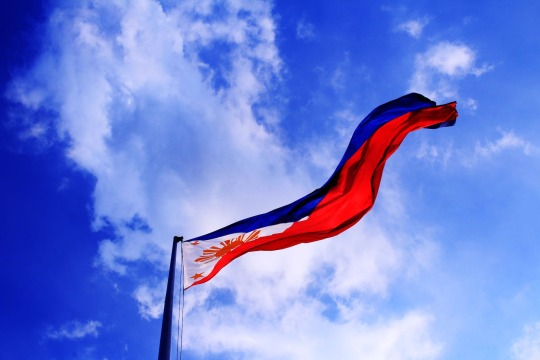
View On WordPress
#American expatriates#American-owned companies#BPO Industry#Economic Growth#Enhanced Defense Cooperation Agreement#Investment#job creation#military alliance#Philippines#tourism.#trade#US-Philippine Defense Agreement
0 notes
Text
Almost every week, oil spills are reported somewhere in the world. From ships dumping contaminating ballast water or breaking down on coral reefs, to direct attacks on oil pipelines and tankers. The larger the spill, the bigger the media attention.
This year alone, off the coast of Trinidad and Tobago, a Bellingcat investigation found that 1,000 tonnes of oil contaminated protected wetlands and wildlife sanctuaries after a barge capsized. In the Middle East, the Houthis targeted the Liberia-flagged tanker, Chios Lion. Carrying a cargo of crude oil, the strike resulted in a 200-kilometre-long oil slick. And in South-East Asia, in late July, the tanker, MT Terra Nova, carrying 1.4 million litres of industrial oil, capsized off the coast of Manila in the Philippines, causing a four-km-long engine oil spill.
The sheer scale of ocean oil pollution is staggering. In Europe, a suspected 3,000 major illegal oil dumps take place annually, with an estimated release of between 15,000 and 60,000 tonnes of oil ending up in the North Sea. In the Mediterranean, figures provided by the Regional Marine Pollution Emergency Response Centre estimate there are 1,500 to 2,000 oil spills every year. The impact of any single oil spill on a marine or coastal ecosystem can be devastating and long-lasting. Animals such as birds, turtles, dolphins and otters can suffer from ingesting or inhaling oil, as well as getting stuck in the slick. The loss of water and soil quality can be toxic to both flora and fauna. Heavy metals enter the food chain, poisoning everything from plankton to shellfish, which in turn affects the livelihoods of coastal communities dependent on fishing and tourism.
However, with a wealth of open source earth observation tools at our fingertips, during such environmental disasters it’s possible for us to identify and monitor these spills, highlight at-risk areas, and even hold perpetrators accountable.
4 notes
·
View notes
Text


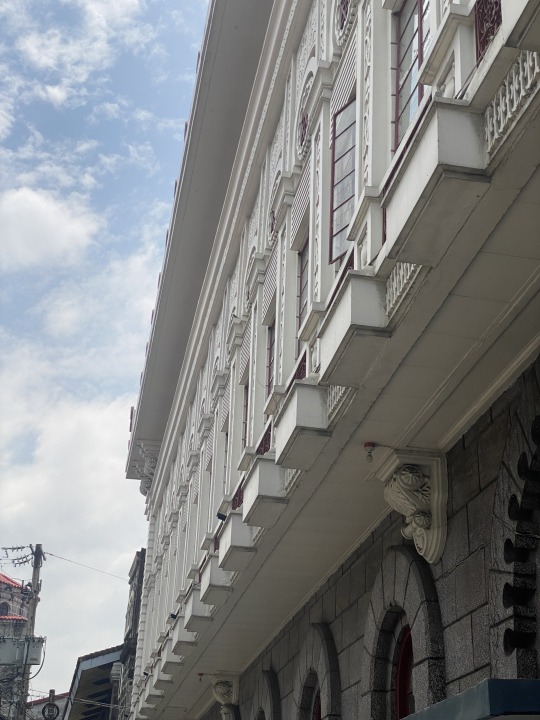


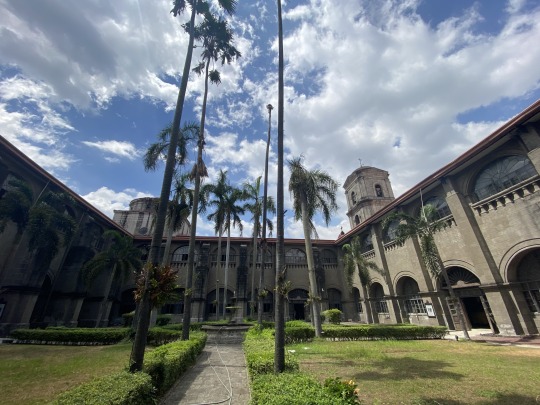

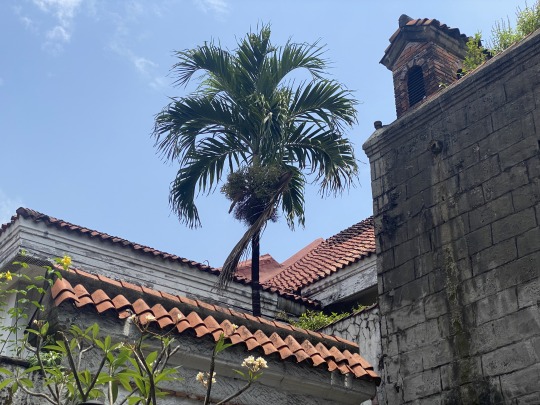

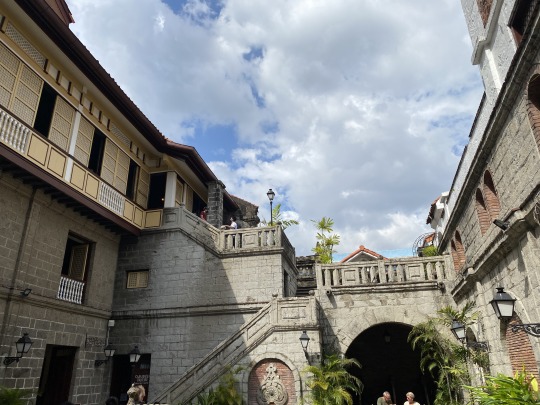

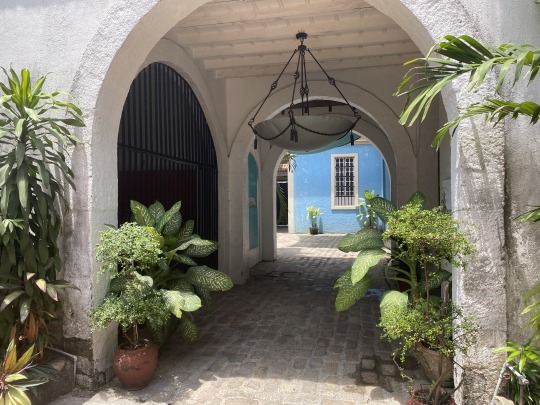
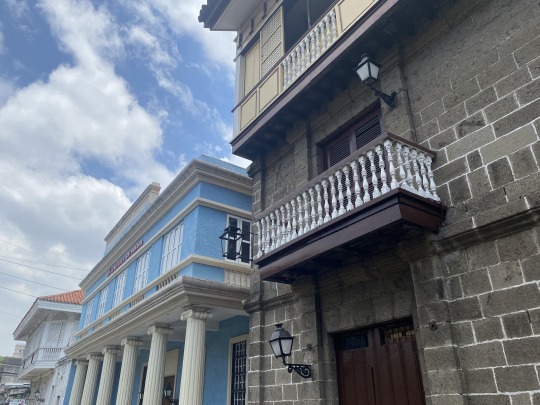


City Shots 6 (2024)
One of my long overdue personal trips was one I spent in the Old City. I've made plans to visit the place before but due to unexpected upheavals (with me moving last year and all), it took until Lent 2024 for me to actually do so. If you haven't been following me, I have a longstanding interest in historic Philippine architecture which had its roots nearly 10 years ago when I started building colonial-themed houses in the Sims 3.
My trip was, like the one in 2022 before it, made during Lent. Unlike in 2022, however, I traveled alone, which gave me plenty of opportunities to explore Plaza San Luis and its neighbors.
I only had time to explore the area around Plaza San Luis and three of its museums (only two of which I elected to share). Inasmuch as I would want to take pictures of the rest of the city's museums (including the ones situated at Fort Santiago) and the other structures around the district, I ran out of time and energy due to how mercilessly hot the day was.
Like with my previous post, more information is shown under the cut.
Camera: iPhone 11
Date: 26 March 2024
Location: Plaza San Luis Complex, Intramuros, Manila, Philippines
Usage: By request. Noncommercial only.
The Old City of Intramuros (meaning "Within the Walls") was the nucleus of modern Manila, built over the flattened remains of the fortress city-state encountered by the conquistador Miguel Lopez de Legaspi in 1570. The city was the crown jewel of the Spanish Philippines and was once the home of the city's elite. Today, the city's residents comprise mostly of students and informal settlers, with the majority of people being tourists and the people who work in the businesses supporting the tourism industry.
Many of the sites in the city are in various states of ruin and restoration, very few of which besides the walls being the original structures at all. Most of the buildings in the city (including the entirety of Plaza San Luis) consist of reconstructed replicas. The Casa Manila Museum (the large yellow structure) isn't even based on a structure from the Old City but is a rebuilt building from a different district altogether.
The only building from the era that survived to be restored is San Agustin Church, the oldest surviving colonial stone structure in the country. Much of the Old City was destroyed toward the end of World War II.
#photography#city shots#urban#cityscapes#architecture#buildings#trees#colonial philippines#urban photography#church#museum#Manila#Intramuros
7 notes
·
View notes
Text
An essay on Southeast Asian tourism I wrote for my BA that's full of vitriol
I'm Southeast Asian. You'll see why.
SE547 (Southeast Asian Societies)
Essay: “‘Culture’ in Southeast Asia today is nothing but a tourist attraction.” Critically evaluate this statement by making reference to relevant ethnographic case studies
Student name: Natalia Lee (17881758)
Due: Monday 16 December 2019, 12pm
Word count: 2040
The proliferation of capitalism and globalisation in Southeast Asia from the 1970s has inevitably been the catalyst for an ever-expanding tourist economy in the region. Southeast Asian nations have become exotic, desirable holiday locales to tourists from developed countries. This essay focuses on the ways in which tourism in Southeast Asia today, informed by capitalist ideals, has shaped local cultural identities with regards to indigeneity, gender, and division of labour. Many of these factors stem from pre-existing local cultural practices, yet are reinforced by the need to accommodate culture for touristic appeal. In Southeast Asian nations such as Indonesia, the Philippines, and Thailand, tourism has greatly stimulated local economies yet has irreparably transformed local culture through rapid adaptation to meet the demands of tourists and governments. I discuss how Southeast Asians have risen to meet these demands, and how various aspects of culture and people themselves have become commodified in the face of a capitalist-driven tourist economy.
UNESCO defines culture as the ‘distinctive spiritual, material, intellectual, and emotional features of society or a social group (Anggraini, 2017: 150). This group identity has been articulated in different ways in the respective regions of Southeast Asia, but has morphed in the advent of modernity and capitalism. Culture, as such, has become commodified in many regards, with many traditional ways of life restructured to match the needs and wants of tourists. For example, traditional Balinese agrarian culture has been preserved to some extent by the desire for tourists to visit the Instagram-worthy rice paddies (Pedersen and Darmiasih, 2015: 151). Simultaneously, Bali’s tourist economy now thrives on providing other forms of non-traditional entertainment to tourists, such as nightclubs and surfing in Kuta (Anggraini, 2017). The tourist economy in Southeast Asia can therefore be viewed as a means of empowering locals through their participation with capitalism, globalisation, and modernity.
The rise in international tourism, especially towards Southeast Asia, can be attributed to the expansion of the Western industrial economy in the 1970s and 80s (Smith, 1990: 34). Capitalism’s influence inevitably reached Southeast Asia during this period, not only changing traditional modes of production (Ong, 1988: 29), but requiring locals to adapt and create new social identities to cater to the desires of tourists. The increased social mobility in both developed and developing nations around this period thus facilitated political and economic changes that have in turn reformed cultural practices and ways of life in order to accommodate the constant demand for tourist infrastructure and services (Smith, 1990: 38-9). From a politico-economic perspective, tourism can be viewed as a means of nation-building in Southeast Asia, with tourism being Indonesia’s third-most profitable economic sector in the late 1960s under the Soeharto regime (Adams, 2018). While the rapid growth of Southeast Asian tourist destinations has created greater social mobility for many locals from increased income and education, it has also reinforced greater structural inequalities, with the rift between poverty and affluence in Southeast Asia becoming more apparent under tourism’s influence. The economic growth accompanying the expanding tourism industry in Southeast Asia has given many an opportunity to facilitate upward social mobility regardless of existing class hierarchy, and influences the structure and formation of classes within a society.
Fagertun’s (2017: 338-341) ethnographic study of Jimbaran Bay in Bali discusses the ways in which class formation, based on economic advancement, impacted one Balinese couple, Bu Minah and her husband Pak Darsa. Due to the increasing popularity of Jimbaran among tourists, the couple were able to expand their small business into a hotel. However, business was uncertain due to the increased competition facilitated by an influx of work migrants into Jimbaran, leading to financial difficulties. Furthermore, traditional Balinese culture permits polygyny, whereby men can have multiple wives if they can afford it. Against Bu Minah’s wishes, Pak Darsa was able to afford a second wife with the money they had accumulated from their business, driving her away from the business and their children due to the traditionally patriarchal Balinese family structure. In this case, upward social mobility, enabled by a rapid increase in financial resources from tourism, bypassed the traditional Balinese-Hindu caste system and allowed the couple the financial freedom to enhance their lives. Economic capital breeds social capital, but pre-existing indigenous class and gender ideals still inform the ways in which structural inequality is created and maintained by the tourism industry in Southeast Asia.
One of the main reasons for tourism in Southeast Asian nations like Thailand is for tourists to experience entertainment in an “exotic” setting (Berger, 2013b: 15). Culture becomes a commodified novelty, where traditional practices like dance and musical performance are reduced to package tours, and ritual meaning is obscured by monetization (Fagertun, 2017; Picard, 1990; Acciaioli, 1985). In Indonesia, the term “cultural tourism” was first implemented by the Dutch during the colonial period and subsequently by the independent Indonesian government, as a means of turning the archipelago, especially Bali, into a global tourist destination (Berger, 2013a: 47; Picard, 1990: 42). Based on this logic, “adat [culture] is appropriated for the purposes of the state” and is therefore an impetus for attracting tourists (Acciaioli, 1985: 157). Today, the popularity of “cultural tourism” in the Southeast Asian region is reflective not only of tourist demands, but the willingness of locals to supply entertainment for these tourists, ranging from traditional performances and handicrafts, to more malign “commodities” including the sex trade. There is thus a symbiotic relationship between tourists and locals, where cultural norms and traditions become “a product of interactions” (Sinclair, 1997: 3). Pre-existing cultural contexts are therefore necessary to understand how and why these transactions take place, and closer examination reveals that institutionalised Southeast Asian cultural norms such as the male hegemony and the enduring influence of colonialism are just as much to blame for transforming “culture” in Southeast Asia into a commodity to be exploited by tourists and locals alike.
This brings into question the nature of “authenticity” in the “culture” marketed to tourists in Southeast Asia. There is a dual nature to the “authentic” culture practiced and experienced by locals, and the “culture” born from tourist demands- what Picard (1990: 43) describes as a dichotomy of “cultural pollution” and “cultural renaissance”. This pollution can be regarded as foreign influences on a society, while renaissance is the revived interest in one’s own culture and traditions (43). Alternatively, traditions and cultural identity have been adopted for political, social, or economic gain by some Southeast Asian peoples. Li (2000: 150) discusses how indigenous identity has been crafted as a political tool in Central Sulawesi, while “the invention of tradition” by self-identified indigenous groups are “a matter of optimal selection” in consumer terms. The consumption of indigenous culture by tourists can therefore be viewed as a created commodity designed to appeal to foreign notions of the exotic. However, cultural identity is not fixed, and is subject to the continuous “play of history, culture and power” (152). To quote Bishop and Robinson (1998: 5), “tourist privilege turns daily life into a spectacle” in Southeast Asia. Tourism’s impact is therefore a progression of culture as it is shaped by modernity and globalisation. Pre-industrial modes of production in Southeast Asia, such as rice farming in Bali and Vietnam, have thus adapted to profit from the tourist economy by marketing traditional agriculture as “exotic”.
Pedersen and Dharmiasih (2015: 151-2) note that the agricultural sector has become an important part of the central Indonesian and Balinese governments’ bid to promote tourism, particularly “eco-tourism” or “sustainable tourism”. The exoticisation of the past is reinforced by the internationally accepted industrialisation of urban areas, and tourists from developed countries flock to observe and participate in pre-colonial, traditional agricultural practices like rice farming in Bali (Fagertun, 2017: 333). Picard’s notion of “cultural pollution and renaissance” once again demonstrates how the culture of rice farming is “polluted” by tourism, while there is a “renaissance” in encouraging traditional farming practices to uphold images of Bali as a pristine, environmentally-conscious society. However, the increased push by the state and independent developers to modernise the island through infrastructural development has led to a significant marginalisation of farmers, involvement of external organisations, and an overall decline in agricultural activity reflected across Southeast Asia (MacRae, 2011).
The shifting role of agriculture as a subsistence economy to a tourist attraction, and the increasingly industrialised modes of production in Southeast Asia are significant. Agriculture and cash cropping were traditionally sectors in which women were permitted to work prior to their roles as factory workers in the 1970s (Ong, 1988: 32). Traditionally, women were also expected to adhere to the Southeast Asian cultural norm of traditionally looking after the family (Jeffreys, 1999: 186). Through participation in the workforce, women were able to challenge traditional values and attained increased social mobility (Truong, 1983: 536). However, the mass migration from rural to urban areas in order to participate in the workforce has created new structural inequalities, and the jobs available unskilled female labourers have led some women to participate in sex tourism as a more lucrative means of gaining economic, and therefore social capital. Truong (1983: 543) theorises that “mass prostitution reflects the structural crisis of the agricultural sector where women were traditionally active”. The role of gender is thus a crucial factor in understanding Southeast Asian culture beyond the veneer of tourism, and the processes underlying sex tourism are a means of analysing the structural inequalities and violence based on traditional notions of the social obligations of Southeast Asian women.
The phenomenon of sex tourism in nations like Thailand and the Philippines is revealing of how people are also commodified in the tourist trade, and how “local culture” is manifold and much deeper than what is marketed towards tourists. Prostitution of women and children in Southeast Asia is embedded in poverty and culturally-based notions of family obligation (Jeffreys, 1999: 180). Rural poverty today reinforces structural inequalities heavily influenced by economic processes, and the proliferation of rural prostitutes servicing urban areas as a means of survival has made countries like Thailand synonymous with a developed “culture” of sex tourism (Truong, 1986; Bishop and Robinson, 1998). Economic shifts from rural to urban areas in Southeast Asia have forced thousands of vulnerable women to migrate to cities like Manila and Bangkok to find work in order to support their families, as well as the women and children trafficked for purposes of sexual exploitation. In this “culture”, prostitution can be seen as a way for Southeast Asian women to participate in modernity, such as by “working with foreigners” (Bishop and Robinson, 1998: 9). Like any other economic mode of production, the popularity of sex tourism in Southeast Asia is a matter of supply and demand (Truong, 1986: 536). Institutionalised gender inequality, based on the lower status of women, and the historical normalisation of prostitution in Southeast Asia (Jeffreys, 1999: 186-7), implies that sex tourism is perpetuated by locals as much as tourists. A culture of concubinage, slave labour, and debt bondage in countries like Vietnam and Thailand (Truong, 1986; Jeffreys, 1999) make sex tourism a profitable enterprise to pimps and human traffickers (UNODC Global Report on Trafficking in Persons, 2016). Prostitution can therefore be viewed from the capitalist perspective as yet another form of labour, with bodies as an exchangeable commodity (Truong, 1983: 534). These are malevolent aspects to Southeast Asian culture that have become a tourist attraction, to the detriment of thousands of women and children.
Under the influence of capitalism, culture in Southeast Asia has been commodified, but not necessarily just for the benefit of tourists. In participating with modernity and globalisation, Southeast Asia has adapted its various “cultures” to meet the demands posed by governments, economies, and tourism. Traditional practices and indigenous identities have been restructured to appeal to the tourist market. Particularly in urban areas, structural inequalities and the marginalisation of the rural poor are evident, with traditional economic practices like agriculture suffering under domestic mass migration and redistribution of resources to more lucrative sectors like tourism. This is negotiated by locals by adopting tourist-focused business strategies to increase their social mobility, albeit with great risk involved. By participating in modernity, culture has become a tangible product that tourists seek in Southeast Asia, driven by the economic success of developed nations and their desire to seek the “exotic”.
References
Acciaioli, G. (1985). Culture as Art: From Practice to Spectacle in Indonesia. Canberra Anthropology, 8(1&2), 148 – 17
Adams, K.M. (2018). Revisiting "Wonderful Indonesia": Tourism, Economy and Society. In: Hefner, R.W (ed.) Routledge Handbook of Contemporary Indonesia. New York: Routledge, 197-207
Anggraini L.M. (2017) A Local Sense of Place for Cultural Sustainability: Reconstruction of Place Identity in Kuta, Bali. In: Saufi A., Andilolo I., Othman N., Lew A. (eds.) Balancing Development and Sustainability in Tourism Destinations. Singapore: Springer
Berger, A.A. (2013a). Bali Tourism. New York: Haworth Press.
Berger, A.A. (2013b). Thailand Tourism. New York: Routledge.
Bishop, R., Robinson, L.S. (1998). Points of Departure: Catalysts and Contexts. In: Night Market: Sexual Cultures and the Thai Economic Miracle. New York: Routledge: 1-15.
Fagertun, A. (2017). Labour in Paradise: Gender, Class and Social Mobility in the Informal Tourism Economy of Urban Bali, Indonesia. The Journal of Development Studies, 53(3), 313-345
Jeffreys, S. (1999). Globalizing sexual exploitation: sex tourism and the traffic in women. Leisure Studies, 18(3): 179-196
Li, T.M. (2000). Articulating indigenous identity in Indonesia: resource politics and the tribal slot. Comparative Studies in Society and History, 42(1): 149-79
MacRae, G. (2011). Rice Farming in Bali. Critical Asian Studies, 43(1): 69-9
Ong, A. (1988). The Production of Possession: Spirits and the Multinational Corporation in Malaysia. American Ethnologist, 15 (1): 28-42
Pedersen, L., Dharmiasih, W. (2015). The Enchantment of Agriculture: State Decentering and Irrigated Rice Production in Bali. The Asia Pacific Journal of Anthropology, 16(2): 141-156
Picard, M. (1990). "Cultural Tourism" in Bali: Cultural Performances as Tourist Attraction. Indonesia, 49(1): 37-74
Sinclair, M.T. (1997). Issues and theories of gender and work in tourism. In: Sinclair, M.T. (ed.) Gender, Work and Tourism. London: Routledge: 1-15
Smith, V.L. (1990). Geographical Implications of “Drifter” Tourism Boracay, Philippines. Tourism Recreation Research, 15(1): 34-42
Truong, T-D. (1983). The Dynamics of Sex Tourism: The Case of Southeast Asia. Development and Change, 14(4): 533-553
UNODC (2016). Global Report on Trafficking in Persons 2016. United Nations publication, Sales No. E.16.IV.6
#essay#writing#academia#tourism#decolonization#decolonisation#anthropology#public anthropology#research#social anthropology#asia#southeast asia
2 notes
·
View notes
Text
Tourism in particular was a key export that displayed the benefits of capitalism and democracy during the Cold War era, a vehicle fit for disciplinary formations of knowledge production that accompanied the geopoliticking and hot wars of the Cold War. The images produced by tourism had significant rhetorical influence when coupled with the sentimentality of Pearl Harbor, for instance, when Hawai‘i campaigned for statehood.56 In the context of the tensions in Asia and the Pacific, the Hawai‘i of James Michener’s imagination was a “paradise redeemed in Cold War terms,” as was the Philippines, the newest decolonized nation-state on the block. The Philippines, in turn, continued to be the U.S. military’s “little brown brother,” benefiting from U.S. military expenditures, as well as establishing its own fledgling visitor industry. The body of regulatory knowledge produced by tourism in Hawai‘i and the Philippines helped to disavow colonial and World War II occupations and Cold War military interventions and to discredit the alternatives of active decolonization movements in these and other sites in the region.
In everyday terms, both U.S. military personnel and tourists are a familiar sight in both Hawai‘i and the Philippines, and they are valued for the kinds of security they ostensibly symbolize as well as for the ways their mutually embracing forms of logic operate to affirm touristic hegemonies and regional militarization. Today, the U.S. Pacific Fleet in Pearl Harbor, the world’s largest naval command, stands guard over what Noel Kent has described as the new plantation society of tourism, which makes up just over 15–20 percent of Hawai‘i’s economy. Likewise, the United States’ 2007–2009 federal defense investment in this colonial outpost averaged $6.5 billion per year, contributing to 10–18 percent of the economy. The Philippine economy, meanwhile, has historically struggled, posting slower growth than that of the Asian dragons, and today it shows a gnp barely twice that of Hawai‘i’s. Tourism, long touted as the panacea for developing economies, has lagged in the Philippines, despite efforts on the part of current and recent administrations at boosting the Philippines as a tourist economy. Comparable Southeast Asian economies such as Vietnam post greater visitor numbers, yet the Philippines still touts tourism as one of its economic saviors.
—Vernadette Vicuña Gonzalez, Securing Paradise: Tourism and Militarism in Hawai‘i and the Philippines
11 notes
·
View notes
Text
EASY TECH GOING TO YOUR DESTINATION
Travel is an important element of people's lives not only in the Philippines, but around the world. Travel is one of the things that makes people happy, relieves tension, and calms them down. There are various methods to travel, but nowadays, travel preparation is made easier with the help of technology. But how can technology help in our world, particularly in travel?
We are all aware that technology has become a vital component of our daily life. Technology has made life easier for many professions, including those in the tourism and hospitality industries, where technology has become a significant component of companies' or individuals' travel. Companies use technology to sell their products, and customers use social media to share their experiences. As a tourist, technology has made it much easier to arrange my activities and trips. With the use of technology, it has made it easier for me to contact with travel companies and other fields that will be required throughout my journey. It has also made it easier for me to share my experiences wherever I go.
Technology will literally make it easier for you to get to your destination. We can't deny that technology really helps a lot in our travels, there are applications like maps, gps, travel booking apps and many others that help us in our travels, there are also social media like Facebook, Instagram, youtube, which really take us to the places we want to go. We can't deny it because I'm sure that most of us would prefer the advanced technology today compared to the previous times. Technology simplifies our lives in many areas, not just in travelling but despite of it we also need to be careful using it because of the rapid improvement of technology and are also the rapid increase of scammers and hackers in the world, so we will constantly remember the saying, "think before you click".
2 notes
·
View notes
Text
What are the key requirements for obtaining ISO 14001 certification in Mumbai?

ISO 14001 Certification in Mumbai?
ISO 14001 Certification in Mumbai is determined to be highly recognized and utilized by the firms to acquire possible market stability. Over 7500 islands make up the Mumbai. The majority of the country’s GDP is contributed by travel and tourism. Cities in Mumbai are just now beginning to industrialize.
The most manufactured and exported goods include copper products, clothing, semiconductors, and other limited electrical items. In the upcoming days, it is anticipated to become a financial titan. At a rapid growth phase, industries began to revolutionize. Mumbai saw a fast rise in the demand for ISO 14001 Certification in Mumbai among rival businesses to stand out in the market and better serve their clients by adhering to all calibration and laboratory criteria.
Importance of ISO 14001 Certification in Mumbai
It encourages and guides organizations in India to meet their environmental obligations. The ISO 14001 Certification in Mumbai is ideal for organizations that wish to demonstrate their commitment to reducing their environmental impact and achieving financial and stakeholder benefits.
As the only international standard devoted to environmental performance, ISO 14001 Certification in Mumbai provides a framework for improving environmental performance in organizations of all sizes. You will gain a competitive advantage when your organization complies with ISO 14001 Certification in Mumbai. Factocert provides ISO 14001 Certification in Mumbai by utilizing ISO standards and guidelines for implementing ISO 14001:2015 environmental management systems.
The Benefits of ISO 14001 Certification in Mumbai Businesses
By embracing ISO 14001 Certification in Mumbai, businesses in Mumbai can expect a multitude of benefits:
Reduced Environmental Impact: ISO 14001 certification in Mumbai helps organizations significantly reduce their environmental impact, including waste production and energy consumption.
Cost Savings: Adopting sustainable practices often leads to cost savings through reduced resource consumption and improved efficiency.
Enhanced Reputation: ISO 14001 certification in Mumbai enhances a company’s reputation, attracting environmentally conscious clients and partners.
Legal Compliance: Businesses that achieve ISO 14001 Certification in Mumbai fully comply with environmental regulations, avoiding legal issues and associated costs.
Why Factocert for ISO 14001 Certification in Mumbai
We provide the best ISO 14001 Consultants in Mumbai, Who are knowledgeable and provide the best solutions. And how to get ISO certification in the Philippines. Kindly reach us at [email protected]. ISO Certification consultants work according to ISO standards and help organizations implement ISO certification with proper documentation.
For more information, visit ISO 14001 Certification in Mumbai.
Related links:
· ISO Certification in Mumbai
· ISO 9001 Certification in Mumbai
· ISO 14001 Certification in Mumbai
· ISO 45001 Certification in Mumbai
· ISO 27001 Certification in Mumbai
· ISO 22000 Certification in Mumbai
· ISO 13485 Certification in Mumbai
· ISO 17025 Certification in Mumbai
RELATED ARTICLE
ISO CONSULTANT IN MUMBAI
2 notes
·
View notes
Text
EXPLORE HONGKONG
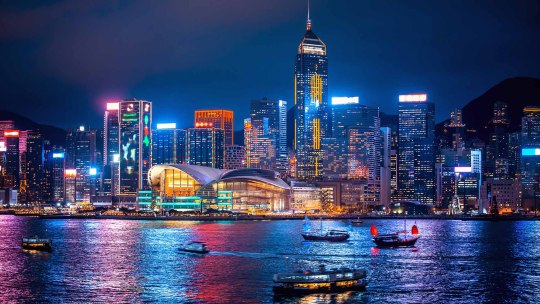
Dream destination: HONGKONG
Hong Kong has always been a favorite destination of tourists, especially of Filipino travelers, as it offers something for everyone--from attractions to food to shopping destinations.
“Hong Kong has always been close to the hearts of Filipino travelers and it is one of Philippines' top travel destinations of choice,” Hong Kong Tourism Board regional director of Southeast Asia Raymond Chan said during the "Marvels in Hong Kong" media event.
The pandemic put a pause on travel for the past two years, but with restrictions slowly easing up globally, tourists have a chance to visit Hong Kong again.
Chan noted that the "0+3 travel measures" is a “significant milestone for Hong Kong.”
“Currently, visitors to Hong Kong are no longer required to undergo hotel quarantine with three-day medical surveillance period,” he explained.
But despite the hitch in global travel, Hong Kong continued to develop its tourism facilities and destinations in the past years to ensure tourists will have something new to look forward to when they return.
history
Hong Kong is a special administrative region (SAR) of the People's Republic of China. It comprises 200 islands located in Eastern Asia bordering the South China Sea and China. Much of Hong Kong's terrain is hilly to mountainous with steep slopes. The government system is a limited democracy; the chief of state is the president of China, and the head of government is the chief executive of Hong Kong. Hong Kong has a free market economy in which the prices of goods and services are determined in a free price system. Hong Kong is a member of the Asia-Pacific Economic Cooperation (APEC).
Hong Kong was established as a colony of the British Empire after the Qing Empire ceded Hong Kong Island in 1841–1842. The colony expanded to the Kowloon Peninsula in 1860 and was further extended when the United Kingdom obtained a 99-year lease of the New Territories in 1898. Hong Kong was briefly occupied by Japan from 1941 to 1945 during World War II. The whole territory was transferred from the United Kingdom to China in 1997. Hong Kong maintains separate governing and economic systems from that of mainland China under the principle of "one country, two systems".[f]
Originally a sparsely populated area of farming and fishing villages,[18][19] the territory is now one of the world's most significant financial centres and commercial ports. Hong Kong is the world's fourth-ranked global financial centre, ninth-largest exporter, and eighth-largest importer. Its currency, the Hong Kong dollar, is the eighth most traded currency in the world. Home to the second-highest number of billionaires of any city in the world, Hong Kong has the largest concentration of ultra high-net-worth individuals. Although the city has one of the highest per capita incomes in the world, severe income inequality exists among the population. Despite having the largest number of skyscrapers of any city in the world, housing in Hong Kong has been well-documented to experience a chronic persistent shortage.
Hong Kong is a highly developed territory and has a Human Development Index (HDI) of 0.952, ranking fourth in the world. The city has the highest life expectancy in the world, and a public transport rate exceeding 90%.
Avenue of stars
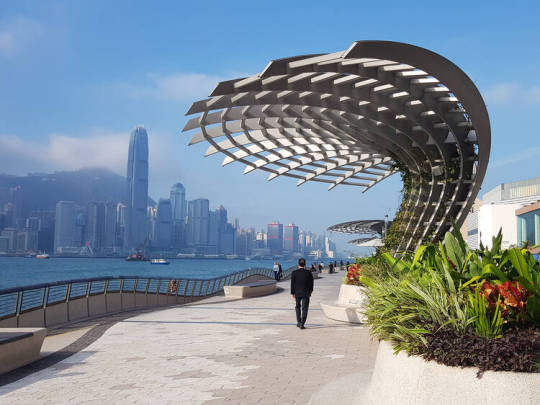
There was a time when Hong Kong’s filmic output was only bested by Hollywood and Bollywood, and while it’s a less prodigious beast these days, the city’s film industry still once produced illustrious names like Bruce Lee, Jackie Chan, Jet Li, the Shaw Brothers, John Woo, and Wong Kar-wai. Avenue of Stars pays tribute to these figures and many others who have helped burnish Hong Kong’s cinematic legacy. Selfie opportunities come with sculptures of Hong Kong legends such as martial arts master Bruce Lee, as well as singer and actress Anita Mui. Even Hong Kong's beloved local cartoon character McDull has a prime spot in front of the Victoria Harbour skyline. Plus, you can check out over 100 handprint plaques set into the wooden handrails along the waterfront.
Theme parks and attractions
It's impossible to talk about Hong Kong and not mention the "'happiest place on Earth."
Hong Kong Disneyland recently unveiled its new Castle of Magical Dreams and even started its new light show, “Momentous

Hong Kong Cuisine
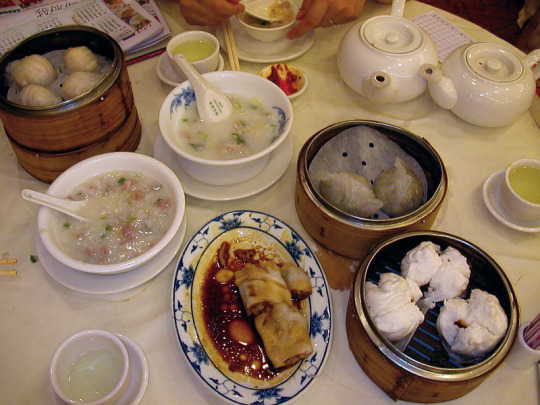
Traditional Hong Kong food hails from the Guangdong Province of China, with the most popular Cantonese dishes consisting of poultry, meat, or seafood alongside rice or noodles and some kind of preserved or pickled vegetables. You’ll find when eating in Hong Kong that there is a dominant sharing culture – most groups order a large meal to be shared together. Street food is also a very significant part of Cantonese food culture in Hong Kong. You’re sure to discover many street stalls selling delicious smelling, often deep fried, foods and snacks!
The culture of hongkong
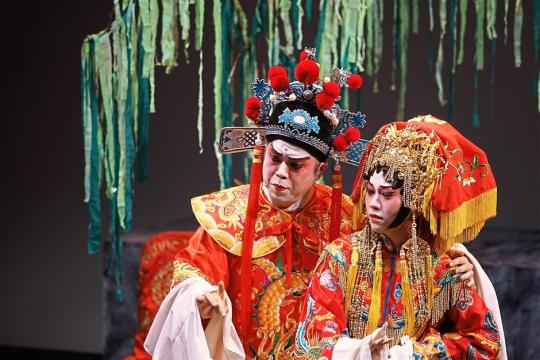
The culture of Hong Kong is primarily a mix of Chinese and Western influences, stemming from Lingnan Cantonese roots and later fusing with British culture due to British colonialism (Jyutping: Jyut6 zeoi6; Traditional Chinese: 粵英薈萃). As an international financial center dubbed "Asia's World City", contemporary Hong Kong has also absorbed many international influences from around the world. Moreover, Hong Kong also has indigenous people and ethnic minorities from South and Southeast Asia, whose cultures all play integral parts in modern day Hong Kong culture. As a result, after the 1997 transfer of sovereignty to the People's Republic of China, Hong Kong has continued to develop a unique identity under the rubric of One Country, Two Systems.
Hong Kong cultural festivals include Chinese New Year, the Dragon Boat Festival, the Mid-Autumn Festival, Christmas and the Western New Year. Expats can expect a great atmosphere at these events which usually involve impressive firework displays. As a city, Hong Kong also enjoys many other cultural events ranging from traditional Cantonese to other Chinese regional operas, theatre productions, ballet performances and music shows.
Hongkong festival
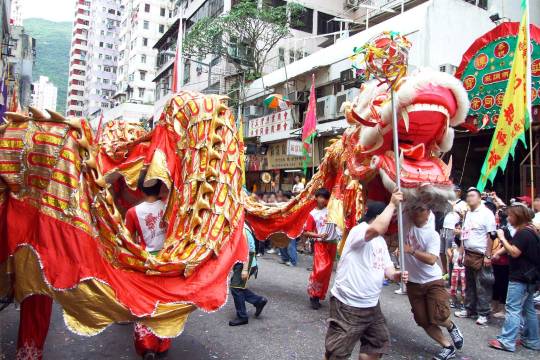
Hong Kong festivals are often lavish affairs with street parades, packed temples, traditional music and dance performances. Chinese New Year is the most important celebration in Hong Kong and many Asian countries, but the city also has plenty of unique festivals you might not find elsewhere.
Buddhist and Taoist events are observed according to the lunar calendar, which means that the dates shift on a yearly basis. Some of Hong Kong’s biggest festivals usually take place in January or February (Chinese New Year), May, and October. It’s best to book your flights and accommodation far in advance as prices tend to soar during these months.
How to get there
Several local airlines such as Air Asia Philippines, Cebu Pacific Air, and Philippine Airlines fly direct several times daily to Hong Kong from Manila departing at Ninoy Aquino International Airport (NAIA). Non-stop flight time from Manila to Hong Kong is around 2 hours 15 minutes.
Budget for Air Asia Philippines : P3,300
Philippine travel tax: P2,500
Where to stay
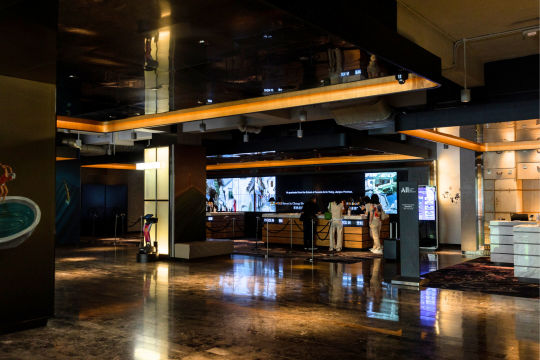
Welcome to The Park Lane Hong Kong, a Pullman Hotel
As soon as you enter the spacious lobby, you will be greeted by captivating digital artworks displayed on large screens. The lobby also showcases exhibitions from the Artist Playground, a Pullman initiative that introduces various artists over time. The hotel offers a blend of art, travel, culture, and technology, ensuring a fulfilling stay. For digital-savy guests, make use of our check-in/out robots to easily check in and check out. Enjoy seamless high-speed Wi-Fi access throughout the hotel. Immerse yourself in a luminous world that harmoniously reflects the essence of Hong Kong and the local lifestyle
Budget for accommodations: P3,000 for 4 nights
Where to eat
Wonton noodles at Mak’s Noodle
The staple of Southeastern China, this delicious brothy delight is common in Hong Kong and can be a thrilling experience if you know where to get it! Typically shrimp, pork and vegetable wrapped in a neat package of thing and springy wonton egg-noodle dough, these little dumpling-like parcels are cooked al dente before being perched atop a steaming hot flavour-filled umami broth. A sprinkle of chopped chives completes the dish which when served should be devoured noodle first to keep your wonton from going soggy. When on the hunt for where to eat in Hong Kong, particularly where to eat wonton noodles, head to Mak’s Noodle – arguably the most renowned noodle shop in the city
Budget for food: S$5 (P175/meal) x 2 meals/day x 5 days = P1,400
How To Get Around
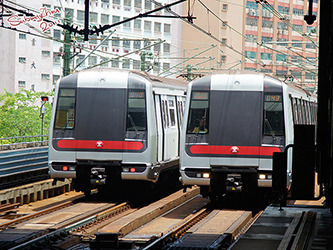
The Mass Transit Railway (known as the MTR) is the fastest and most convenient mode of transport in the urban areas. Serving an average of 4.8 million passengers a day, the MTR covers much of the New Territories, Kowloon and the harbour front of Hong Kong Island, with the latest expansion now including stations at Sai Ying Pun, the University of Hong Kong and Kennedy Town. The Island Line is planned to be extended further south to Aberdeen in 2016, transporting passengers to Ocean Park, a major tourist attraction in the city, as well as Wong Chuk Hang and South Horizons. Other extension plans include Shatin to Central via To Kwa Wan and an express railway linking Hong Kong to Guangzhou and Beijing.
Budjet for transportation : P910
What To See and Do
Spending 5 days in Hong Kong gives you plenty of time to see the top sights & attractions, while not needing to rush through it all. You will be able to take full advantage of your days & nights in Hong Kong, and have the flexibility to move things around as you see fit.
Budjet for attractions: P980
Total budget
P3,300 – Air Asia Philippines
P2,500 – Philippine travel tax
P3,000 – Accommodations
P1,400 – Food
P910 – Transportation
P980 – Attractions
——
P12,090 – TOTAL
Reference:
https://en.m.wikipedia.org/wiki/Hong_Kong
https://en.m.wikipedia.org/wiki/Hong_Kong#:~:text=Hong%20Kong%20was%20established%20as,the%20New%20Territories%20in%201898.
https://www.william-russell.com/blog/hong-kong-culture-and-customs-guide-expats/#:~:text=With%20such%20a%20rich%20mix,and%20the%20Western%20New%20Year.
https://en.m.wikipedia.org/wiki/Hong_Kong_cuisine
4 notes
·
View notes
Link
1 note
·
View note
Text
The Philippines offers a vibrant market for diverse industries

The Philippines offers a vibrant market for diverse industries due to its strategic location, young workforce, and strong consumer demand. The country's robust economic growth—averaging around 6% in recent years—has been supported by remittances, the BPO industry, and expanding digital sectors. With a median age of about 25, the Filipino workforce is educated, English-speaking, and adaptable, appealing to industries like IT, manufacturing, and retail.
Key growth areas include e-commerce, renewable energy, tourism, and healthcare. The government also promotes foreign investment through policies like the CREATE Act, which offers tax incentives. However, challenges include complex regulatory processes and infrastructure needs, although initiatives like "Build, Build, Build" aim to address these.
Overall, the Philippines is a promising destination for investors seeking growth in Southeast Asia, though understanding the regulatory landscape and adapting to local market preferences is crucial for success
0 notes
Text
OFW Outlook: 5-Year Forecast for Home Health, Maritime, and Closing the Gender Wage Gap
The plight of the Overseas Filipino Worker (OFW) is a complex tapestry woven with threads of sacrifice, resilience, and the enduring pursuit of a better life for themselves and their families back home. Millions of Filipinos venture abroad annually, seeking opportunities unavailable in their homeland, contributing significantly to the Philippine economy through remittances that fuel consumption and investment. This exploration delves into the future of OFW labor, specifically focusing on home health aides, the maritime sector, job security over the next five years, and the pervasive issue of the gender wage gap.
Home Health Aides: A Growing Demand, but at What Cost?
The global demand for home health aides is projected to surge in the next five years, driven by aging populations in developed countries. This presents a significant opportunity for Filipino caregivers, renowned for their compassion, dedication, and strong work ethic. However, this seemingly promising field is fraught with challenges. Often, home health aides face exploitative working conditions, including long hours, low wages, limited access to healthcare, and isolation from support networks. The lack of standardized contracts and inadequate enforcement of existing labor laws leave many vulnerable to abuse and exploitation. Furthermore, the emotional and physical toll of caring for the elderly and infirm can be substantial, leading to burnout and mental health issues. Moving forward, ensuring fair wages, reasonable working hours, access to healthcare, and robust legal protections will be crucial to safeguarding the well-being of Filipino home health aides. Organizations advocating for migrant workers' rights, alongside government initiatives, play a vital role in addressing these concerns and promoting ethical recruitment practices.
Navigating the Waters: The Future of Filipino Seafarers
The Philippines has long been a major supplier of seafarers to the global maritime industry. Filipino sailors are highly valued for their skills, experience, and adaptability. The next five years hold both opportunities and challenges for this sector. Technological advancements in automation and artificial intelligence are transforming the shipping industry, potentially leading to a shift in required skill sets and possibly even a decrease in demand for certain roles. To remain competitive, Filipino seafarers must adapt to these changes by embracing lifelong learning and acquiring new skills in areas such as digital navigation and cybersecurity. Furthermore, the maritime industry faces increasing pressure to reduce its environmental footprint. This presents an opportunity for Filipino seafarers to upskill in green technologies and sustainable shipping practices. Addressing issues like fair compensation, safe working conditions, and access to timely medical care remains paramount. Strengthening maritime unions and advocating for stricter international regulations are essential steps in protecting the rights and welfare of Filipino seafarers.
Job Security in a Volatile Global Landscape: The Next Five Years
Predicting job security for OFWs over the next five years is inherently complex due to the multitude of influencing factors. The global economic outlook, geopolitical tensions, technological advancements, and evolving immigration policies all play a role in shaping the future of overseas employment. While some sectors, like healthcare and technology, are expected to experience growth, others may face decline or transformation. The COVID-19 pandemic highlighted the vulnerability of OFWs, particularly those in tourism and hospitality, demonstrating the need for greater resilience and adaptability. Diversification of skills and continuous professional development will be crucial for navigating the changing labor market landscape. Governments, both in the Philippines and host countries, must invest in programs that support OFW reskilling and upskilling, enabling them to transition to new opportunities. Strengthening social safety nets, including unemployment insurance and access to healthcare, is also essential to mitigate the risks faced by OFWs during periods of economic uncertainty.
The Gender Wage Gap: A Persistent Inequality
The gender wage gap remains a persistent issue for OFWs, reflecting broader societal inequalities. Women often occupy lower-paying roles, such as domestic work and caregiving, and face discrimination in terms of wages and promotion opportunities. Even within the same occupation, women frequently earn less than their male counterparts. This disparity is further exacerbated by the lack of transparency in recruitment processes and the prevalence of informal employment arrangements. Addressing the gender wage gap requires a multi-pronged approach. Promoting gender equality in education and skills development is essential to empower women to access higher-paying jobs. Strengthening labor laws, enforcing equal pay regulations, and promoting pay transparency are crucial steps in closing the wage gap. Furthermore, challenging traditional gender roles and stereotypes is essential to create a more equitable and inclusive environment for all OFWs. Organizations working to empower women migrant workers play a vital role in raising awareness, providing legal assistance, and advocating for policy changes.
Navigating the Job Search: Resources for OFWs
Finding reliable and legitimate employment opportunities is a critical aspect of the OFW journey. Websites like OFWJobs.org provide valuable resources and information for job seekers, including listings of verified employers, advice on navigating the recruitment process, and guidance on protecting oneself from scams and exploitation. Utilizing these platforms can empower OFWs to make informed decisions and secure safe and ethical employment.
Conclusion: A Future of Challenges and Opportunities
The future of OFW labor over the next five years presents a complex mix of challenges and opportunities. While global demand for certain skills, such as healthcare and maritime professionals, is projected to grow, technological advancements and economic uncertainties create new challenges. Addressing issues like job security, fair wages, safe working conditions, and the gender wage gap is crucial to ensuring the well-being and prosperity of OFWs. Empowering OFWs through education, skills development, and access to reliable information is essential to navigating the evolving global labor market and securing a brighter future for themselves and their families. Collaboration between governments, international organizations, and civil society is vital to creating a more just and equitable environment for all OFWs. The contributions of these individuals are invaluable, and their rights and welfare must be protected and upheld. Their journey is one of resilience, sacrifice, and the unwavering pursuit of a better tomorrow.
0 notes
Text
Bridging East and West: Recruitment Agencies in Bulgaria and the Asian Workforce
Bulgaria, a Balkan gem with a rich history and burgeoning economy, has emerged as an attractive destination for businesses seeking to expand their operations. With its strategic location, skilled workforce, and favorable business climate, the country has become a hub for various industries. A key player in facilitating this growth is the recruitment agency sector, especially in the context of connecting Asian workers with Bulgarian employers.
The Bulgarian Job Market: A Growing Demand
Bulgaria's economy has witnessed steady growth in recent years, driven by sectors like IT, outsourcing, manufacturing, and tourism. This expansion has created a demand for skilled professionals that often exceeds the local talent pool. To bridge this gap, Bulgarian recruitment agencies have become essential in sourcing qualified candidates both domestically and internationally.

The Rise of Asian Workers in Bulgaria
Asian workers, particularly from countries like India, the Philippines, and China, have increasingly become a valuable asset to Bulgarian companies. Their strong work ethic, technical expertise, and language skills make them attractive candidates for various roles.
IT and Software Development: The IT sector in Bulgaria is booming, and Asian professionals are highly sought after for their programming and software development skills.
Business Process Outsourcing (BPO): The country's growing BPO industry benefits from the language proficiency and customer service orientation of Asian workers.
Manufacturing and Engineering: Asian workers, especially from engineering backgrounds, are contributing to Bulgaria's manufacturing sector.
Healthcare: The demand for healthcare professionals is on the rise in Bulgaria, and Asian nurses and doctors are filling the gap.
The Role of Recruitment Agencies
Recruitment agencies in Bulgaria play a pivotal role in connecting Asian workers with Bulgarian employers. They offer a range of services, including:
Talent Sourcing: Identifying qualified candidates from Asia based on specific job requirements.
Recruitment Process Management: Handling the entire recruitment process, from initial screening to onboarding.
Visa and Work Permit Assistance: Guiding both employers and employees through the immigration process.
Cultural Integration Support: Providing support to Asian workers in adapting to Bulgarian culture and work environment.
Challenges and Opportunities
While the partnership between Bulgarian recruitment agencies and Asian workers holds immense potential, several challenges need to be addressed:
Language Barriers: Effective communication is crucial, and language training programs can be beneficial for both employers and employees.
Cultural Differences: Understanding and respecting cultural nuances is essential for successful integration.
Legal and Regulatory Compliance: Staying updated with immigration and labor laws is vital to avoid legal issues.
Talent Retention: Retaining skilled Asian workers requires competitive compensation packages and opportunities for career growth.
Despite these challenges, the collaboration between Bulgarian recruitment agencies and Asian workers presents a unique opportunity for both parties. By leveraging their strengths and addressing the challenges, they can contribute to the continued growth and development of Bulgaria's economy.
Tips for Asian Workers Seeking Jobs in Bulgaria
Research the Bulgarian Job Market: Understand the industries and roles in demand.
Learn Bulgarian or English: Proficiency in these languages will significantly enhance your job prospects.
Network with Professionals: Building connections in Bulgaria can open doors to job opportunities.
Partner with a Reputable Recruitment Agency: A reliable agency can guide you through the job search process.
Be Prepared for Cultural Differences: Embrace the Bulgarian culture and be open to new experiences.
Conclusion
The alliance between recruitment agencies in Bulgaria and Asian workers is a dynamic partnership that is reshaping the country's labor market. By effectively addressing challenges and capitalizing on opportunities, this collaboration can drive economic growth, foster cultural exchange, and create a win-win situation for both parties. As Bulgaria continues to evolve as a business destination, the role of recruitment agencies in connecting Asian talent with Bulgarian employers will become even more critical.
#manpower agency#recruitment agency#hr consultancy#manpower consultancy#recruitment agencies#employment agency#manpower#bulgaria#bulgaria recruitment agency#india#nepalbangladesh#asia
0 notes
Text
In southern Israel, crops are now waiting in the sun, wilting further with every passing minute and shuddering a bit as army vehicles buzz past. The area’s farms have become a vast army staging area, pocked with olive green tents and tanks. Farmhands are nowhere in sight.
On Oct. 7, Hamas rampaged through this region killing more than a thousand people, including foreigners. As many as 7,000 Thai nationals, who make up the largest share of the agricultural workforce, fled Israel after nearly two dozen were abducted and three dozen massacred.
The veritable greenhouse of the nation is now dependent on university volunteers. They have tried to salvage the situation and pick the fruit before it rots, but their efforts have fallen short and the Israeli government has already started to import some items.
Israelis are proud of their technological innovations in agriculture and of their ability to grow in a largely arid region and feed their people. Now it is at the top of the list of sectors that will bear the brunt of a long war with Hamas. Oil and gas, tourism, health care, retail and technology are some of the others.
“Many of my colleagues have left,” said Cindy, a care-giver from the Philippines who asked to be identified only by her first name for safety reasons. “We are going, too, if it gets any worse,” she told me at a market in Jerusalem.
Many airlines have stopped flying to Israel while the government has asked for activities at a gas field to be halted to minimize the risk of a targeted attack. The Israeli shekel has already plummeted to a 14 year low, the central bank has cut the forecast for economic growth this year from 3 percent to 2.3 percent, and prominent industries are facing disruptions.
Israel entered the war with $200 billion in reserves and $14 billion in aid, mainly for military funding, from the United States. And yet experts say the ongoing conflict will cost the Israeli economy billions more and take much longer to recover than it has in the past. Israeli volunteers at home and abroad are chipping in with extra labor and economic assistance—an admirable gesture but insufficient to make up the economic shortfall.
Michel Strawczynski, an economist at the Hebrew University of Jerusalem and former director of the research department at the Israeli central bank, said the cost of previous two confrontations—the Lebanon war in the summer of 2006 and against Hamas in 2014—cost up to 0.5 percent of the GDP and mainly impacted the tourism sector. But this time, “estimations are for a fall of 3.5 percent to 15 percent in annual terms” in the last quarter of this year.
Entire towns have been abandoned and businesses shut down as 250,000 people have been evacuated and forced to seek refuge across hotels in the country or with relatives living elsewhere. Furthermore, the call to 360,000 reservists, who were employed in various jobs in peace time, has stretched companies and made their continuation as profit-making businesses precarious.
“This war will cause additional costs compared to these two (previous) confrontations also because of a massive participation of reservists, who are inserted in the labor market in normal times but will be absent from their jobs during the war,” Strawczynski said. “If the war is long, the impact of lack of human resources will result on a high cost for the Israeli economy.”
Tourism, a sector that makes up 3 percent of Israel’s GDP and indirectly provides 6 percent of total jobs, has been dealt a fatal blow, too. The beach in Tel Aviv and cobbled lanes of the old city in Jerusalem, the main tourist attractions, both lie vacant.
It’s peak tourist season, but restaurants and bars in the historical quarters of Jaffa gate served few visitors, mostly journalists. The tourists who throng this part of the world to soak in the sun and bathe in a mix of Middle Eastern and Western vibes—enjoying hummus and cocktails in a breezy balmy November—were absent.
The hotels were hosting the internally displaced, with some subsidy from the government but still at a huge loss.
“It’s peak season, but there are no tourists,” said Mohammad, an Arab Israeli and owner of a candy shop in Tel Aviv who also asked that only his first name be used for safety reasons. “No families, no children lining for candies.” His friend Ahmad Hasuna lifted his hands in the air and looked up at the sky when I asked about his business. “There is nothing. It’s very difficult,” he said and pointed to several shops that hadn’t opened since the war broke out in the south.
Both Israeli Jews and Arab entrepreneurs here were united in their desperation, sipping on coffee and hopelessly gazing at the empty streets. At the Market House Hotel nearby, Alaa Marshagi, an Israeli Arab, sat at the reception and said there was only 10 percent occupancy compared to previous years, “all journalists.” His colleague Avi Cohen, an Israeli Jew, said most of the rooms were occupied by people who evacuated from the south at a heavy discount. “We are hosting them at a 50 percent loss, plus free meals,” he told Foreign Policy. “Right now, the government is helping, but that’s only until Nov. 22.”
The startup industry in Israel has been a great success and, although it stands to suffer less in comparison, it was already under pressure as investors pulled back from a country mired in mass protests over judicial reforms. Investments in the sector halved last year sensing instability as thousands gathered against the government’s judicial reforms that would allegedly weaken the courts and empower ruling politicians.
A group of global venture capitalists have come to the aid of budding Israeli startups and are trying to raise millions of dollars to save them from bankruptcy. They have launched an initiative called Iron Nation to protect the companies, and the country’s economy, from collapsing under pressure. (Up to 20 percent of reservists doubled up as employees in the tech industry.) The founders of the initiative claimed that 150 companies have already sought help for a chance at receiving between $500,000 and $1.5 million to keep their businesses running.
According to a study by Hebrew University titled “Civil Society Engagement in Israel During the Iron Swords War,” nearly half of the Israeli population volunteered in some way to help compatriots directly or indirectly reeling under the effects of Hamas’s attack and the concomitant war. Professor Michal Almog-Bar, the author of the study, told Israeli media that domestic philanthropic organizations and NGOs donated “tens of millions of dollars,” while donations from Jews in North America was estimated to run into hundreds of millions of dollars.
Meanwhile, to meet the costs of the war effort—expected to rise into billions of shekels—the economists are pushing the government to reprioritize the budget. Three-hundred Israeli economists have written an open letter to the government and called on Prime Minister Benjamin Netanyahu and Finance Minister Bezalel Smotrich, who hails from a far-right party, to urgently implement a range of measures however unpalatable to some of their constituents. They have asked that the money kept aside for educational programs for the ultra-orthodox communities be redirected to military expenditure.
Strawczynski said the priorities are to reallocate billions of shekels towards “defense expenditure” and to “indemnizating affected individuals and firms” particularly in the south and the north. “We recommend redirecting what is called coalition funds,” money allocated for key programs of different parties under the coalition agreement. “These issues are related to the groups of voters of those parties, and not to common interest,” he said.
The Israeli government has presented an economic aid plan that offers $1 billion to help businesses, and Finance Minister Smotrich has promised that “whatever doesn’t involve the wartime effort and the state’s resilience will be halted.” The far-right, however, is still adamant on not letting Palestinians be a part of the solution. National Security Minister Itamar Ben Gvir, the most vocal far-right leader, has blocked a proposal to hire more Palestinians to meet the shortfall of workers in Israel farms.
The agriculture industry faces a shortfall of 10,000 farmers and the Israeli Ministry of Agriculture has proposed a plan to hire 8,000 of those from the West Bank—Palestinian women of all ages and men at 60 or older. Gvir, however, warns of a security risk, a claim that some support as mistrust between Israelis and Palestinians deepens but others find prejudiced, especially since 2 percent of the Israeli population already comprises Israeli Arabs who arguably have some sympathy for the Palestinian cause but are not in cahoots with Hamas.
Even as the shekel depreciated, a five-member committee of the Bank of Israel which oversees the monetary policy has decided to maintain the interest rate at 4.75 percent and the governor of the central bank underscored the economy’s resilience. “There should be no major changes to our fundamental fiscal position,” Bank of Israel Governor Amir Yaron said.
Israel is not new to conflict and has in the past sailed through, but this time the war is expected to be a longer affair and may turn into a regional confrontation. Strawczynski suggested the key factor would ultimately be the length of the conflict.
2 notes
·
View notes
Text
Philippines Retail Market: Trends, Opportunities, and Growth Prospects
Introduction
The Philippines Retail Market is projected to be valued at USD 66.70 billion in 2024 and is anticipated to grow to USD 96.02 billion by 2029, expanding at a compound annual growth rate (CAGR) of 7.56% over the forecast period (2024-2029).
The retail industry in the Philippines is undergoing a significant transformation driven by economic growth, a young population, increasing consumer spending, and technological advancements. As one of Southeast Asia's most promising retail markets, the Philippines is becoming a hotbed for both local and international retail players. In this blog, we will explore the key drivers, emerging trends, and growth opportunities shaping the Philippines' retail landscape.
Market Overview
The Philippines retail market has shown resilience and growth despite global economic challenges. With rising disposable incomes, a growing middle class, and increased urbanization, the retail sector has expanded rapidly across the country. The sector includes traditional brick-and-mortar stores as well as a booming e-commerce industry, which has gained momentum due to increasing internet penetration and smartphone usage.
Key Drivers of the Philippines Retail Market:
Economic Growth: The Philippines' strong economic performance, characterized by steady GDP growth, has resulted in higher consumer spending power, boosting retail sales across multiple categories.
Rising Middle Class: As the middle class continues to grow, there is an increased demand for premium products, branded goods, and international retail offerings, providing opportunities for high-end retail brands to enter the market.
E-Commerce Expansion: The rapid adoption of online shopping, accelerated by the COVID-19 pandemic, has transformed the retail landscape. E-commerce giants like Lazada and Shopee have dominated, while smaller local retailers are also capitalizing on digital platforms.
Urbanization and Mall Culture: The Philippines is known for its shopping malls, which are not just retail hubs but social and cultural centers. Urbanization is driving the growth of more malls, especially in metro areas, contributing to the expansion of physical retail.
Increasing Tourism: Pre-pandemic, the Philippines was a popular destination for international tourists, many of whom engaged in retail shopping. As the tourism sector rebounds, the retail industry is likely to benefit from increased tourist spending.
Emerging Trends in the Philippines Retail Market:
Omnichannel Retailing: Retailers in the Philippines are adopting omnichannel strategies, integrating online and offline shopping experiences to cater to tech-savvy consumers who seek convenience and a seamless shopping journey.
Rise of Sustainable and Ethical Retail: Filipino consumers are becoming more conscious of sustainability. This has led to the rise of eco-friendly products, ethical brands, and green packaging solutions, especially in fashion, beauty, and food retail sectors.
Growth of Convenience Stores: The demand for convenience stores is on the rise, particularly in urban areas. Chains like 7-Eleven and Ministop are expanding to meet the growing need for quick, accessible retail options.
Digital Payment Solutions: The shift toward cashless transactions has been rapid, with the adoption of mobile wallets such as GCash and PayMaya. This digital payment revolution is boosting e-commerce and in-store purchases, offering a smoother customer experience.
Expansion of Fast Fashion: International fast-fashion brands like H&M, Uniqlo, and Zara have expanded their presence in the Philippines, attracting younger consumers with affordable yet trendy apparel.
Health and Wellness Focus: Filipino consumers are increasingly focused on health and wellness, driving demand for organic foods, fitness-related products, and health supplements. This trend has reshaped grocery stores, pharmacies, and even clothing retailers.
Challenges in the Philippines Retail Market:
Supply Chain Disruptions: The Philippines, like many countries, faces supply chain challenges, which can affect inventory management and product availability, particularly in e-commerce.
High Competition: Both local and international retailers are vying for consumer attention, making the market highly competitive. Retailers need to differentiate themselves to gain a competitive edge.
Inflationary Pressures: Rising inflation and fluctuating currency rates could impact retail prices, which may affect consumer spending in some segments.
Growth Opportunities:
Expansion into Tier 2 and Tier 3 Cities: While Metro Manila remains a major retail hub, there are vast opportunities in less saturated cities and provinces where retail infrastructure is still developing.
Personalization and AI in Retail: The use of artificial intelligence (AI) for personalized shopping experiences is gaining ground. Retailers can leverage data analytics to offer tailored recommendations and enhance customer loyalty.
Rise of Direct-to-Consumer (DTC) Brands: More Filipino entrepreneurs and small businesses are entering the retail space by selling directly to consumers through social media and e-commerce platforms, bypassing traditional retail channels.
Conclusion
The Philippines retail market is poised for continued growth, driven by a blend of economic strength, rising consumer demand, and digital transformation. Retailers that can adapt to the changing needs of Filipino consumers and embrace innovative technologies will find significant opportunities in this dynamic market. From the growth of e-commerce to the rise of sustainable and ethical shopping, the future of retail in the Philippines is full of promise.
#Philippines Retail Market trends#Philippines Retail Market size#Philippines Retail Market share#Philippines Retail Market analysis#Philippines Retail Market forecast#Philippines Retail Market demand
0 notes
Photo

The Philippines, one of the more favorite tourist destinations in the world, has been concentrating on developing a lucrative integrated resort industry. The country is now seen as a viable alternative to other Asian countries for any international enterprises seeking to expand their investments in the region. READ: https://www.ianfulgar.com/project-ideas/integrated-resort-development-the-future-of-business-tourism/ . .
#architecture#tourism#resort#hospitality#resortlife#travelblog#travelguide#luxurytravel#igtravel#tours#paradise#island#destination#getaway#designhotels#realestate#philippines#luxuryrealestate#itsmorefuninthephilippines#realestatetips#realestatemarket#resorts#choosephilippines#realestatedevelopment#luxuryresort#hotelsandresorts#integratedresort#casino
0 notes
Text
Buying Property for International Real Estate Philippines

The Philippines, with its breathtaking beaches, tropical climate, and rapidly growing urban centers, is increasingly becoming a hotspot for international real estate investment. Whether you’re seeking a modern condominium in bustling Manila, a luxurious beachfront villa in Boracay, or a tranquil countryside retreat, the Philippine real estate market has something for everyone. Its diverse property offerings, combined with affordable pricing and a vibrant economy, make it an attractive destination for global buyers.
The Philippines has long been recognized for its natural beauty, but its appeal goes beyond scenic landscapes. The country’s real estate market is booming, fueled by a strong economy, increasing tourism, and a growing expatriate community. Foreigners are drawn to the best international real estate Philippines for a variety of reasons, including its low cost of living, warm hospitality, and ease of communication, with English being one of the official languages.
Key cities such as Metro Manila, Cebu, and Davao are experiencing rapid urban development, offering a mix of residential, commercial, and industrial real estate opportunities. For those seeking a vacation home or retirement property, popular tourist destinations like Palawan, Boracay, and Siargao offer idyllic settings surrounded by nature. The Philippine government has also implemented favorable property ownership laws for foreigners, particularly with condominiums, making it easier for non-residents to invest in the country’s thriving real estate market.

Ulist Properties: Your Gateway to International Real Estate
For international buyers interested in the Philippine real estate market, Ulist Properties is the ideal platform. Their global real estate marketplace that connects buyers and sellers from around the world, with listings in 57 countries, including the Philippines. The platform is designed to make property transactions straightforward and transparent, ensuring a smooth buying process for both local and international investors.
It stands out for its commitment to a commission-free business model. Unlike traditional real estate platforms, they allow buyers and sellers to interact directly, eliminating the need for middlemen and hidden fees. This direct approach not only saves money but also fosters greater trust and clarity between both parties.
The Philippine Properties You Can Explore on
Ulist Properties offers a wide range of property listings across the Philippines, catering to different tastes, budgets, and investment goals. Whether you're looking for a high-rise condominium in Metro Manila, a beachfront villa in Palawan, or a residential lot in Cebu, they have you covered.
Here are some of the key property types you can find
Beachfront Villas: The Philippines is famous for its pristine beaches, and they offer stunning beachfront properties in areas like Boracay, Palawan, and Siargao. These properties are perfect for those looking to invest in vacation homes or rental properties in popular tourist destinations.
Urban Condominiums: Metro Manila, Cebu, and Davao offer a vibrant urban lifestyle with a mix of commercial, residential, and recreational spaces. Their features a variety of condominiums in these cities, offering a modern and convenient living experience.
Countryside Retreats: For those looking for a peaceful escape, Their showcases properties in more remote and serene areas of the Philippines. These countryside homes offer privacy and relaxation amidst lush greenery and tranquil environments.
Why Invest in Philippine Real Estate?
There are numerous advantages to investing in real estate in the Philippines, making it an appealing option for both long-term investors and individuals looking for personal use properties.
Rising Property Values: The Philippines has seen consistent growth in property values over the past decade. Cities like Manila and Cebu have experienced a surge in demand for residential and commercial spaces, driven by urbanization and economic development. Investing now offers the potential for significant returns over time.
Affordable Pricing: Compared to other countries in Southeast Asia, the Philippines offers competitive property prices. This affordability, combined with the country’s economic potential, makes it a prime location for foreign investors seeking good value.
Favorable Property Laws: The Philippine government has made it easier for foreigners to own property, particularly with condominiums. While foreign ownership of land is restricted, foreigners can own 100% of a condominium unit, making it a convenient option for those interested in Philippine real estate.
Ulist Properties simplifies the process of finding and purchasing the best international real estate Philippines. The platform provides comprehensive property listings with detailed descriptions, high-quality images, and direct contact options. This ensures that you can make informed decisions and connect directly with property sellers without the need for costly intermediaries.
Whether you are an investor seeking opportunities in emerging markets or looking for a dream home in paradise, Ulist Properties is your trusted partner. With its global reach, user-friendly interface, and commission-free model, they helps you explore real estate options with ease and confidence. Start your journey into the Philippine real estate market today with us!
For More Information
Contact us : 14038896635
Email Id : [email protected]
Visit Us : www.ulistproperties.com
#International Real Estate Philippines#International Real Estate#Real Estate Philippines#Philippines
0 notes